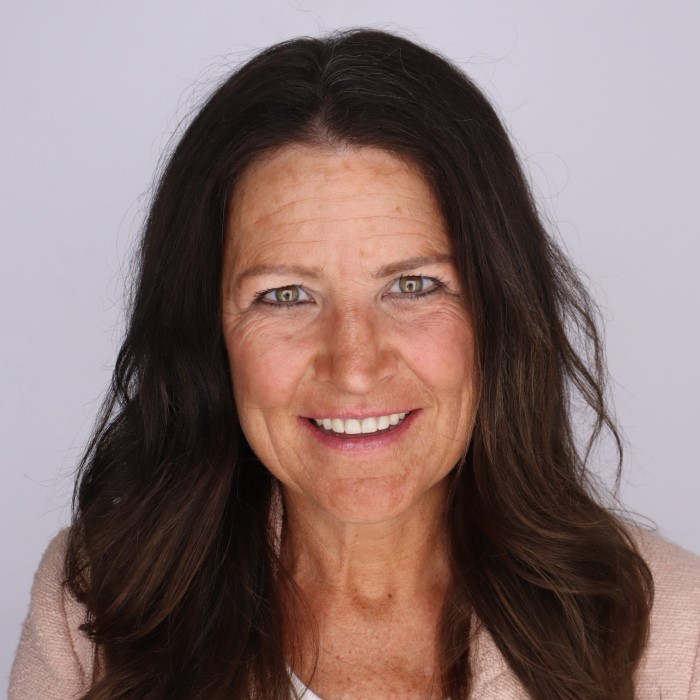
Repairing the pipeline: Perspectives on diversity and inclusion in IT Diversity and Inclusion in Tech
15 October 2018
Gender diversity and inclusion initiatives have taken centerstage in IT organizations. But success in this area isn’t consistent across all companies. What are IT teams doing right, and what can others do to ensure progress is being made?
Introduction
Leading chief information officers (CIOs) in many industries have made it a priority to increase the diversity of the workforce, fill the leadership pipeline with talented women and members of other underrepresented groups, and promote them into executive IT leadership positions. On the other hand, some IT leaders are simply focused on diverse hiring, but their progress toward closing the gaps on the leadership team has stalled. How are some CIOs and organizations able to succeed in this regard while others falter?
This CIO Insider, the second in Deloitte’s special edition series focused on executive women in IT, will review the status of diversity and inclusion initiatives (D&I) in IT based on data and insights from Deloitte’s US CIO Program, share the success stories of CIOs who have broken ground in this area, and explore the latest trends including:
- Goals, metrics, and accountability in diversity hiring
- Inclusive cultures that encourage different ways of thinking and working
- Career development opportunities
- How to engage all groups in equality discussions
- Leading practices from industry leaders
The current state of IT diversity and inclusion initiatives
Even though many technology leaders are taking steps in the right direction, women and other diverse groups continue to be underrepresented in the IT workforce. Deloitte’s US CIO Program found that many CIOs are trying to create diverse IT teams, but the results are mixed, suggesting that more creative leadership may be needed to make measurable progress on diversity and inclusion initiatives.
Learn more
Explore the Diversity and Inclusion in Tech collection
Read more from the CIO Insider collection
Download the Deloitte Insights and Dow Jones app
Subscribe to receive Leadership content
Most US CIOs who participated in the 2018 Global CIO Survey say their organizations lack key infrastructure to support diverse employees. Forty-four percent say they have no specific initiatives in place to recruit, develop, or retain a diverse workforce. And while 36 percent say their organizations aim to recruit and hire diverse employees, far fewer focus on training and development (22 percent) or retention (15 percent) programs that can help keep talented underrepresented employees on board for the long term (figure 1).

Even on IT teams with workplace D&I programs, less than a third of their IT staff (32 percent) are women—only 10 percentage points more than teams that did not provide such programs (22 percent). And CIOs who say their IT teams provide D&I programs have only 6 percentage points more female direct reports (27 percent) than those whose teams did not provide such programs (21 percent), as shown in figure 2.

Although the number of women and minorities enrolled in tech programs is beginning to increase1 and many IT organizations have stepped up their diversity recruiting and hiring efforts, there is still much work to be done. Women make up only about 25 percent of technology workers; even fewer African-American and Hispanic workers hold tech jobs, respectively comprising only 9 percent and 7 percent of technology workers.2 The US Equal Employment Opportunity Commission reports that 80 percent of technology executives are men; 82 percent are white.3
To address these challenges, a comprehensive IT D&I program typically focuses not only on hiring but also on:
- Goals, metrics, and accountability
- Inclusive IT cultures
- Access to career development opportunities
- Engaging male supporters
Goals, metrics, and accountability for diversity recruiting and hiring
To bring in diverse candidates at all levels, many organizations have reinvented recruitment efforts, looked to eliminate bias throughout the hiring process, and partnered with educational institutions or external organizations that emphasize STEM careers or STEM education. For example, diverse recruiting and interviewing teams can proactively serve as a testament to an organization’s commitment to diversity and inclusion. Keysight VP and CIO Dan Krantz increased the number of female applicants and hires by sending a team of all-female recruiters to college job fairs. “Qualified women technologists are out there, but you have to be intentional about finding them,” he says.4
Developing and publishing a formalized plan with quantifiable goals and metrics that track the results of diversity recruiting and hiring can signal a company’s commitment to the process and show a willingness to be held publicly accountable. For example, what percentage of new hires are diverse hires? How many diverse applicants were there for every open role? How many diverse candidates got a phone screening and how many made it through the phone screening but not past the in-person interview?
Workforce metrics help COUNTRY Financial CIO Brad Hildestad understand whether his team is meeting diversity objectives and other talent goals. “Our HR team provides key information about the IT workforce that my direct reports use to develop talent plans for their teams,” he says. “We can see where there are gaps—for example, in gender, race, or age—and we can strategize how to recruit to eliminate those gaps.”5
Mark Roellig, chief technology and administrative officer of life insurer MassMutual, helps the MassMutual IT team remain aligned with the company’s comprehensive strategy for recruiting and retaining diverse groups of employees by requiring his direct reports to have D&I objectives. He tracks their progress in these areas throughout the year and in end-of-year evaluations, recognizing and rewarding those who advance the organization’s and company’s objectives.6
Inclusive cultures can make room for new ways of thinking and working
Researchers at Deloitte define inclusive cultures as those that support the diversity of thinking that arises when companies hire employees with diverse backgrounds, experiences, and ideas.7 Organizations with inclusive cultures are twice as likely to meet or exceed financial targets as those without, three times as likely to be high-performing, six times more likely to be innovative and agile, and eight times more likely to achieve better business outcomes.8
Inclusive IT cultures can often eliminate many of the obstacles that lead women and members of other underrepresented groups to change companies or leave the workforce altogether. According to one study, organizations with inclusive cultures have higher rates of employee retention and find it easier to recruit new employees than those without.9 Companies with more diverse teams have a 22 percent lower turnover than those without.10
Creating inclusive environments likely requires CIOs and other executives to make room for new ways of thinking, collaborating, leading, and networking. Many CIOs leverage corporate employee resource groups (ERGs) created for women, veterans, people of color, and other diverse groups of employees with shared characteristics or life experiences. Members typically support each other through networking and mentoring, explore potential career opportunities, and work on career development strategies.
Target’s female tech employees can participate in both the Women’s Business Council and Target Women in Science and Technology. In addition, every business unit across Target has a diversity action committee (DAC) that is tasked with aligning to the company’s overall D&I vision, mission, and goals. The technology team’s DAC has developed partnerships and hosts events with key advocacy groups nationally and across the Minneapolis-St. Paul area, where Target is headquartered. “These events show our support for the community, provide exposure for us and our partners, and help create a recruitment pool for our team,” says Jeanette Olson, Target’s VP of technology services.11
Can inclusivity be measured? Olson says Target sought to quantify its progress at developing a female-friendly culture by benchmarking against other companies and industries and by establishing hiring and retention goals. This created one tangible way to measure inclusivity. “Diverse teams are better,” she says. “It’s good for Target’s business when our team reflects our guests, because then we can better understand and better serve the needs of our guests.”
Career development can help fill the leadership pipeline
In the work environment, some women have not always had access to the social and networking opportunities available to their peers. Frustrated by the lack of informal networks of sponsors and mentors, clear career paths, and professional development plans, many women feel their careers are stagnating and leave the IT workforce.12 The same holds true for many members of other underrepresented groups.
To help level the playing field, CIOs can help identify and develop high-performing candidates with diverse backgrounds by giving them access to formal career and professional development resources, including programs that can enable them to develop networks, find mentors, design career paths, and gain professional and leadership skills. A six-year study measuring the results of leadership programs targeted toward mid-career women technologists identified dramatic increases in participants’ confidence levels, goal clarity, and network strength after completing the program. Participants were promoted at twice the rate as those in a control group who had not participated in the program.13
Target cultivates women technology leaders through its year-long Engineering Manager Immersion Program (eMIP). “Through eMIP, we create training and mentorship opportunities that help more women accelerate their career path and become senior engineering managers,” says Olson. “Participants attend classroom training, become a part of a supportive cohort, and receive individual sponsorship and on-the-job leadership experience.”
To combat the pipeline issue, Harley-Davidson CIO Taren Rodabaugh is careful to proactively look for high-performing women rather than expecting them to self-select. “We found that many high-performing women aren’t raising their hands to say they’re ready to move up because they don’t have 100 percent of the requirements,” she says. “Many women need to be coached to feel ready to move up if they can’t ‘check all the boxes.’”14
Rodabaugh doesn’t exclude women without traditional technology backgrounds. “We don’t limit ourselves to IT,” she says. “We’ve looked to areas such as manufacturing or even sales and marketing to find highly qualified project managers or financial experts who understand how to get things done. There are certain core leadership skillsets that aren't technology-specific.”
Building awareness can encourage everyone to
lean in
Successful D&I programs generally rely on everyone to “lean in” as supporters and educate others on implicit biases, advocate for equality, and serve as mentors and sponsors. But this is often a challenge: One study found that women technologists are more likely than men to believe that mixed-gender teams are more productive, innovative, and creative than single-gender teams.15
Research has shown that inclusion training programs can be effective in giving employees the information and tools they need to become better supporters of D&I. In a 2016 pilot program, mid-career men and women who were influential in their organizations were given training to become ambassadors for gender partnership. Upon conclusion of the program, male participants’ self-ranking of their knowledge of the business case for diversity increased along with their self-ranking of their ability to be a good gender partner.16
Education and awareness can help transcend these barriers. Roellig emphasizes the value in articulating diversity’s business benefits: “We need to explain why diversity is beneficial and in everyone’s personal best interest,” he says.
Key takeaways: Six ways to help move the needle
To create inclusive IT cultures that enable all employees to thrive regardless of gender, race, age, sexual orientation, disability, or other characteristics, consider these six leading practices that are based on Deloitte interviews and research.
- Articulate the business case. Clearly outlining the business benefits for IT D&I can help CIOs align any team skeptics to the D&I strategy. More diversity can help teams overcome persistent IT talent shortages, and research has shown that the heterogeneity of ideas present in diverse technology teams can enable better operational and financial performance and greater innovation, among other benefits. Employees on such teams benefit from higher performance ratings and pay bonuses.17
- Establish metrics and hold leaders accountable. Diversity-related data on talent, hiring, and salary, among others, can help CIOs create baseline measures, set goals, compare progress across teams and industry averages, and hold IT leaders (and themselves) accountable for meeting targets. Talent data may reveal gaps in racial and ethnic diversity, sexual orientation, age, educational background, disability, geography, or other factors, enabling CIOs to determine what diversity means for their team and extend their commitment to diversity beyond gender.
- Pay attention to inclusion, not just diversity. Organizations that focus primarily on recruiting and hiring diverse populations but not on retaining them may not be fully committed to true inclusivity. Many employees appreciate perks such as generous parental leave and on-site childcare, but they also want to work on IT teams that authentically prioritize and value inclusivity, provide advancement and development opportunities, and remove biases that may exist in HR and IT policies (e.g., salaries, performance reviews, and flexible scheduling).18
- Provide networking, mentoring, sponsoring, and professional development opportunities. ERGs, formal and informal mentoring and sponsorship opportunities, and professional and career development opportunities can help level the playing field by creating an environment where women and underrepresented minorities don’t have to climb uphill to access the same opportunities as others.
- Enlist everyone in D&I initiatives. Inclusion training can provide men and women with the information and tools to become valuable supporters of diversity. Some CIOs may be able to leverage enterprisewide inclusion training initiatives, such as MassMutual’s employee program “White Men and Allies,” which is designed to bring men into the D&I conversation.
- Walk the talk. In any department, leaders set the tone. CIOs’ beliefs, words, and actions usually help drive IT D&I goals and objectives. For example, they can serve as advisors for ERGs, lead corporate or team D&I initiatives or committees, or sponsor and mentor high-performing women technologists. CIOs can also work to help ensure that outside vendors and partners share similar corporate diversity objectives. “Employees watch leaders like hawks,” Roellig says. “Leaders need to make clear that diversity and inclusion are priorities. They are not just extracurriculars or nice things to have if you have spare time, but part of your corporate objectives,” he says. “Live it, breathe it, and show it to the organization in all of your actions.”







